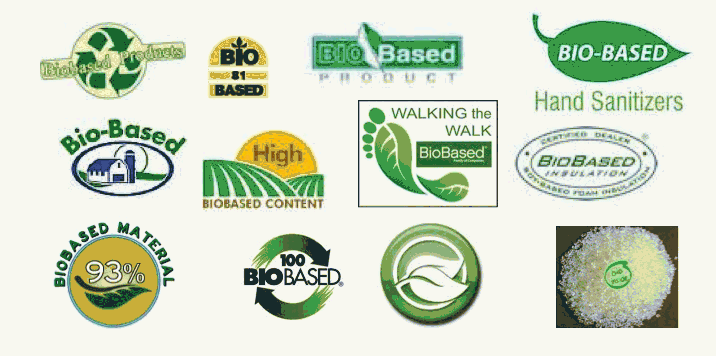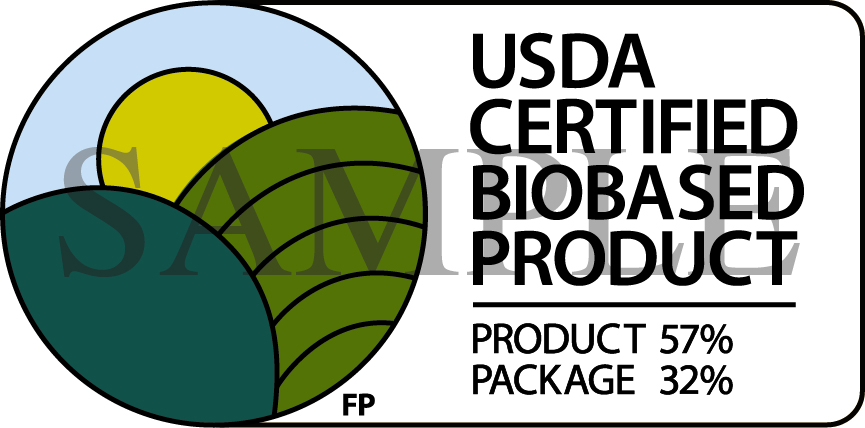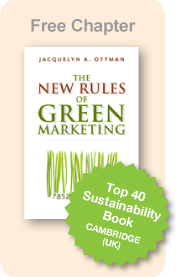Jacquie Ottman's
Green Marketing Blog
USDA Certification Raises Bar for Biobased
February 21, 2012 by Jacquelyn Ottman
With carbon footprint and energy independence on everyone’s minds, many marketers are looking to capitalize upon their product’s biobased content. But not all biobased claims are alike. The scientific rigor of an ASTM standard combined with the credibility of the USDA raises the bar for the industry and makes the USDA Certified Biobased label a new source of competitive advantage within the consumer and government procurement markets for brand owners who make the effort to get their biobased products certified.
What is “Biobased”?
There is no Webster’s definition of biobased. So, marketers have tended to define it loosely or link it to perceptions of biobased as anything biological, living, natural, renewable or even biodegradable. Some do not reveal the amount of, or basis for, claiming biobased content, making comparisons difficult. This can even represent greenwash when biobased content levels are insignificant. Many questionable biobased claims have emerged, including several official-looking logos with no third party backing. With over 25,000 biobased products on the market, clearly there’s a need to clear up the confusion.

Chart: J. Ottman Consulting, Inc.
The USDA Certified Biobased label introduced one year ago this month now helps to level the market for biobased claims by providing a clear definition and an internationally recognized test standard backed up by the credibility of the USDA. The label already has already certified 500 products, with applications in the pipeline for at least 400 more. (See our previous post for more detail.)
Not just any biologically derived product or package can qualify for the label. Certified products must meet three key criteria: they meet the definition of biobased as written into the 2008 Farm Bill, they contain minimum levels of biobased content set forth by the USDA and verified by the ASTM D6866 test standard (minimums are determined on a category by category basis and are pegged to performance and other criteria), and they represent alternatives to petroleum-based materials introduced after 1972. So, products that were on the market before 1972 made from natural fibers or forestry resources such as cotton tee shirts, office paper, or a 2 x 4 made of pine would not qualify. And neither would products whose biobased content did not meet minimum levels. (See http://biopreferred.gov for more details.)

Translating Biobased Content Into Marketing Benefits
The label, with its sun, sea and crops motif was designed to help communicate that biobased products can be derived from the sea or forests — not just grown from plants. For transparency, it requires that the exact percentage of biobased content be listed on the label for the product and/or package. Thus, marketers are provided with a level playing field and consumers have an easy way to identify legitimate biobased products, as well as to compare and trust in their stated content levels.
Marketers can use the label to support a range of benefits including energy independence, alternatives to petroleum, carbon cycle management, enhanced farm and rural economies, and green jobs. Related and specific product environmental benefits as applicable, including renewable, biodegradable, natural, or compostable, must be supported and substantiated with scientific evidence.
Credibility is key. Proprietary formulas safeguarded. The price is right.
The USDA Biobased certification process is administered by Iowa State University, an independent third party. Only accredited independent laboratories conduct testing. Since the certification only measures carbon content, no proprietary formulas have to be disclosed. Unlike most other certifications, there is no upfront fee, licensing or royalties, so even the smallest businesses can take advantage of the program. Only a $500 lab test is required — a small price to pay for a potentially big competitive advantage.
Seventh Generation leads the pack.
Seventh Generation has already certified over 35 of their household and personal care products; their motivations: to promote transparency, to avoid greenwash, to allow consumers to make side by side comparisons, and to change the way the industry talks about “natural”. In the words of Julia Walker, Associate Scientist of Seventh Generation, “Our consumers want to know where their products originate without being “greenwashed.” The USDA Certified Biobased label enables us to disclose the percent renewable carbon in our products, telling consumers how much carbon comes from plants versus petroleum. The credibility of the method will give consumers the confidence they deserve to make conscious choices about their purchases and the products they bring into their homes.”
Jacquelyn Ottman and Mark Eisen are colleagues at New York City-based J. Ottman Consulting, Inc. They advised USDA BioPreferred on the launch of the USDA Certified Biobased label during 2011 and are now working with labelers on capturing the value of their participation in the program. Ms. Ottman is the author of The New Rules of Green Marketing: Strategies, Tools and Inspiration for Sustainable Branding (Berrett-Koehler, 2011). Mr. Eisen is the former environmental marketing director at The Home Depot. They are co-authors of, “The Rise of the Biobased Economy — “Why Brand Owners Need a Strategy in 2012”.
Copyright © 2012 J. Ottman Consulting, Inc.



 ShareThis
ShareThis

